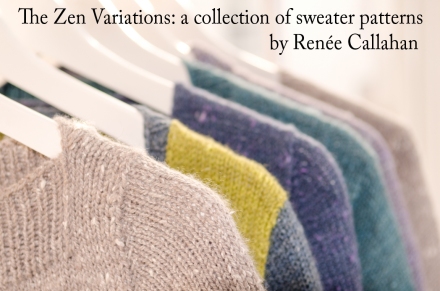Hello!
This month I was so close! The pattern is written, knit up, tech edited and almost ready to go. The thing is, I going to spend Halloween with the lovely Kettle Yarn Co., and October’s pattern is knit in her gorgeous yarn. I really can’t resist taking knits and camera along for a little photo shoot. It would be rude not to.
But I really couldn’t stand the fact that I am so close to actually achieving a New years resolution. A whole year of doing what I resolved to on in those first hazy days of the year. Only 3 months to go. And even if I was just a couple of days late and could have overlooked the discrepancy since I am the only one keeping track, I guess I really wanted the prize for ridiculous adherence to the letter of a law I made up. So here it is it, my pattern for Christmas in October!


Christmas Eve Bauble
The Christmas Eve Bauble is a lovely and quick knit, perfect for using up scraps of 4-ply yarn. I have listed the yarns used, but any will 4 ply or light DK/heavy fingering yarn will work beautifully. EDIT: I have found out that Rowan had discontinued yet another yarn I have in my stash. I knit up another bauble in scrapes of sock yarn and it works out just fine! Knitable in an evening (or even the night before), these baubles will deck the halls with cosy, handmade style.
MATERIALS
YARN
4 ply/fingering approx; 175 yds/160 m per 50 g ball)
MC: (light grey) 8 g.
CC1 (dark grey) 2 g.
CC2 (blue) 1 g.
CC3 (red) 2 g.
NEEDLES
US #2/2.75 mm double-pointed needles/circulars or size needed to obtain gauge.
NOTIONS
1 Christmas bauble, tapestry needle, 1 stitch marker.
GAUGE
6 sts and 8 rows = 1 inch/2.54 cm in stranded St st stretched over bauble.
SIZE
10 3/8 inches/26.5 cm bauble circumference
BAUBLE PATTERN
CAST ON
With MC, cast on 8 sts. Arrange sts on dpns or circular needle to join in the rnd. Keep the cast on loose enough to accommodate the hanging attachment. PM to mark beginning of rnd.
INCREASE
Rnd 1: (K1, m1*) around. (16 sts)
Rnd 2 and all even rounds: Knit around.
Rnd 3: K1, m1, (k2, m1) to last stitch, k1. (24 sts)
Rnd 5: K1, m1 (k3, m1) to last 2 sts, k2. (32 sts)
Rnd 7: K1, m1, (k4, m1) to last 3 sts, k3. (40 sts)
Rnd 9: K1, m1, (k5, m1) to last 4 sts, k4. (48 sts)
Rnd 11: K1, m1, (k6, m1) to last 5 sts, k5. (56 sts)
Rnd 13: K1, m1, (k7,m1) to last 6 sts, k6. (64 sts)
Rnd 14: Knit around.
CHART
 Work 8 repeats of chart once through row 1-11.
Work 8 repeats of chart once through row 1-11.
DECREASE
Rnd 1 and all odd rounds: Knit around.
Rnd 2: K1, (ssk, k6) to last 5 sts, k5. (56 sts)
Rnd 4: K1, (ssk, k5) to last 4 sts, k4. (48 sts)
Rnd 6: K1, (ssk, k4) to last 3 sts, k3. (40 sts)
Rnd 8: K1, (ssk, k3) to last 2 sts, k2. (32 sts)
Rnd 10: K1, (ssk, k2) to last stitch, k1. (24 sts)
Insert the ball into the knitting.
Rnd 12: (K1, ssk) around. (16 sts)
Rnd 13: Ssk around. (8 sts)

FINISHING
Thread the tail through a tapestry needle and draw through the remaining sts twice. Secure top tail to make a hanging loop or weave in end.

At least I know I won’t be last minute with my November pattern! (Or will I?! It is so too early to start with the panto, I know…)
*I use a backward loop cast on as a m1–please see the abbreviations page if that isn’t a familiar one for you.
Happy knitting,
R.

















 to enjoy while you catch up with some friends and settle down on the sofa with some knitting.
to enjoy while you catch up with some friends and settle down on the sofa with some knitting.





















